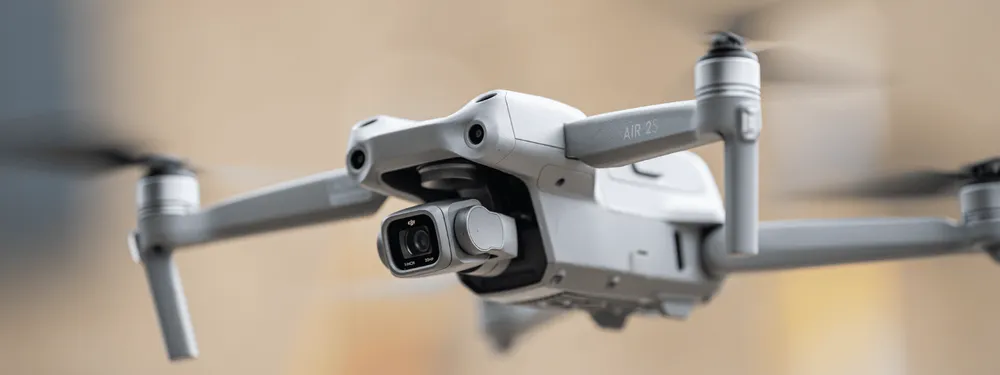Have you been considering the DJI Air 2S for your photogrammetry projects and wondering if it’s the best option available? You are not alone. With the rapid advancement in drone technology, choosing the right tool for your needs is no simple task. But don’t worry, we’ll look into every aspect of the DJI Air 2S to help you make an informed decision.
The Main Feature
When it comes to drones, the primary feature that attracts many to the DJI Air 2S is its 1-inch camera sensor packed within a compact, foldable body. This sensor is a significant selling point, especially for those prioritizing exceptional image quality without lugging around a massive piece of equipment.
Camera Capabilities
Even though the Air 2S does not have a physical aperture that you can adjust, this is manageable for most users with ND filters. This is a particular consideration for more serious videographers aiming to control exposure.
Obstacle Sensing
The Air 2S features obstacle sensing in multiple directions, enhancing safety and ease for users. The only shortfall is the absence of lateral obstacle sensors. Nevertheless, the drone covers most essential aspects, including upward and downward sensing, making it a well-rounded device for varied conditions.
Real-World Experience
Using the DJI Air 2S feels like a quintessential DJI experience. The flying experience, while slightly less nimble than newer models like the Mini 3 Pro and Mavic 3, remains satisfactory. The drone manages fluctuating wind conditions well and provides around 20 minutes of flight time in real-world conditions.
Flight Control
The DJI Fly app, used for operating the drone, has evolved significantly. If you are already familiar with DJI products, you will find the transition to the Air 2S seamless. The remote controller, the DJI RC-N1, also ensures a solid and reliable connection, which is crucial for uninterrupted flying sessions.

Photo and Video Quality
The drone’s image quality is among its most celebrated features. Using a 1-inch sensor with 20 actual megapixels, the DJI Air 2S rivals many other high-quality drones on the market. The ability to capture stunning raw photos and 10-bit video with a flat DLOG color profile offers versatility for professionals and hobbyists alike.
Comparisons
To give a better perspective, let’s compare the DJI Air 2S with its competitors:
| Feature | DJI Air 2S | DJI Mini 3 Pro | DJI Mavic 3 | Autel Evo Lite+ |
|---|---|---|---|---|
| Camera Sensor | 1-inch, 20MP | 1/1.3-inch, 48MP | 4/3 CMOS | 1-inch, 50MP |
| Weight | 595g | <250g< />d> | 895g | 835g |
| Obstacle Sensing | Upward, downward, forward, backward | Forward, backward, downward | Omnidirectional | Forward, backward, downward |
| Flight Time | ~31 minutes | ~34 minutes | ~46 minutes | ~40 minutes |
| Cost | Moderate | Lower | High | Moderate |
DJI Air 2S vs. DJI Mini 3 Pro
If you prioritize regulatory compliance (under 250 grams), the smallest possible size for travel, and vertical video shooting for social media, the DJI Mini 3 Pro might be better suited for you. However, the DJI Air 2S generally offers better image quality and more video options, making it a more pragmatic choice for many.

DJI Air 2S vs. DJI Mavic 3
For professional video makers and photographers, the DJI Mavic 3, despite its higher price, offers superior photo and video quality, a secondary telephoto camera, and omnidirectional obstacle sensing. Yet, this comes with the drawback of increased cost and complexity, making it less suitable for hobbyist drone pilots.
DJI Air 2S vs. Autel Evo Lite+
The Autel Evo Lite+ provides comparable image quality but falls short in various key areas. It includes an adjustable aperture but lacks 10-bit video support and has a narrower field of view. Its bulkier build, longer flight time, and solid build quality come at the cost of a higher price and less refined software, making the DJI Air 2S the better overall choice.
Using DJI Air 2S for Photogrammetry
When it comes to photogrammetry, the ability to utilize third-party apps is critical. Unlike its competitors, the DJI Air 2S supports some flight planning apps, offering the benefit of automated flights—a significant advantage for photogrammetry professionals.
Mechanical Shutter Absence
One potential drawback is the lack of a mechanical shutter. However, other issues usually arise before you encounter rolling shutter artifacts in your datasets, making this more of a secondary concern for most users.
Specific Applications
The Air 2S excels in specific photogrammetry applications, providing exceptional versatility and ease of use for a broad range of users—from hobbyists to seasoned professionals.
Conclusion
The DJI Air 2S is undoubtedly an excellent option in the consumer drone market, featuring unrivaled image quality for its size. If you are looking to venture into aerial photogrammetry and automated flights, the Air 2S stands out as the best choice.
Feel free to explore further and see how this drone measures up to your specific needs. Every photogrammetry professional’s requirements can differ, but you will likely find that the DJI Air 2S meets or exceeds your expectations in most scenarios. If you have any further questions or need detailed insights, always ensure to seek additional reviews and expert opinions.

